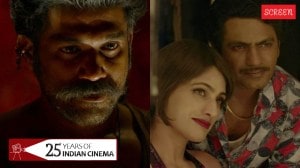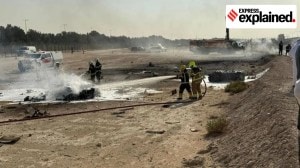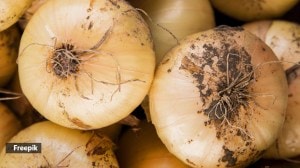Love by the Bosphorus
<B>The Museum of Innocence</B> <B><font color"#cc000">Orhan Pamuk </font></B> <B>Translated by Maureen Freely</B> <B>Alfred A. Knopf</B> <B>Pages: 536</B> <B>$28.95</B>
In his Istanbul,Orhan Pamuk writes that the defining characteristic of the city and its inhabitants can be captured by the Turkish word huzun: a type of deep,melancholic nostalgia,a state of mind that is ultimately as life affirming as it is negating. His fat,satisfying new novel,The Museum of Innocence,is suffused with just such a feeling.
The book starts with a bang: in the dusty bedroom of a hitherto-uninhabited house in mid-Seventies Istanbul,the upper-class,30-year-old Kemal is making ecstatic love to Fusun,a poor distant relative. In retrospect,Kemal,the narrator,says that this was the happiest moment of my life. Shortly after,this heir to the fortunes of a thriving distribution-and-export firm breezily tells us that hes engaged to another woman,Sibel,an alliance more in keeping with his social standing.
Kemals attraction towards the 18-year-old student and shopgirl Fusun deepens and grows,and he finds himself helpless in the face of his desire. The initial relationship lasts for barely a month-and-a-half,but after it,hes racked with anguish,driven to break off his engagement and then spends nine years trying to win Fusun back. Its an obsession that brings to mind Florentinos passion for Fermina in Gabriel Garcia Marquezs Love in the Time of Cholera. The fixated Kemal is often caddish and duplicitous,but earns a degree of empathy with his fanatical quest.
He also lovingly details another fixation: that of collecting objects to fill his museum of innocence,each one enshrining a memory associated with his beloved. An earring,a doll,a piece of wallpaper,a hotel key,a bell,restaurant menus,photographs,an ashtray,hairclips,a paperweight and much more these,like Prousts madeleine,are his gateways to the past. In them,he finds the intersection of desire,touch and love. This transformation of moments into mementos also holds the book together at a structural level,with its succession of short chapters.
Kemals fascination for populating his museum is matched by Pamuks for delineating life in Istanbul. He contrasts social strata through a succession of details and observations,and the large cast includes people from Kemals extended family,friends and business associates,as well as Fusuns circle of film aspirants. Like the narrator,Pamuk too comes across as the anthropologist of my own experience.
The city,then,with its inhabitants and landscapes lives and breathes in the book,and time and again,Pamuks love for it comes through: There was beauty to behold in the world the summer night was cooled by the north wind blowing off the Bosphorus,rustling the leaves of the plane trees in the courtyard of the Tesvikiye Mosque,and causing them to whisper in that lovely soft way I remembered from childhood; and at nightfall the swallows were screeching as they swooped over the dome of the mosque and the rooftops of the 1930s apartment buildings. Also woven into the narrative are historical incidents from the years in which it is set,such as when the waters of the Bosphorus were aflame because of an oil spill caused by colliding Greek and Romanian freighters.
As with his earlier work,theres a tug-of-war between tradition and modernity. Here,much of this is expressed in Turkish societys attitude towards its women: Should they remain virgins until wedlock? Should they work as shopgirls? Should they appear in beauty contests? How short should their skirts be?
Ironically enough,despite all that were told about Fusun,she remains a cipher much like Humberts Lolita. Kemal himself confesses in a moment of rare candour: I never paused to wonder what might be going on in the mind of the woman with whom I was madly in love,and what her dreams might be; I only fantasised about her. In this sense,Fusun is as much an object as any other in his collection.
There is much sensuality in the book,with many passages carrying an affecting erotic charge. Theres also a playful spirit that occasionally shines through,such as when a certain Orhan Pamuk puts in an appearance at the narrators engagement as the chain-smoking,twenty-three-year-old Orhan,nothing special about him beyond his propensity to act nervous and impatient,affecting a mocking smile. Pamuk re-appears towards the end,this time as a full-blown novelist,giving the book a self-referential twist.
It must be said that because of some heavy-handed foreshadowing,the denouement can be seen approaching from a distance. And the middle section,detailing Kemals visits to Fusun and his attempts to set up a film production business,sags a bit. Despite the lucid translation,one does come across the occasional clunky cliché: the sexual beast threatens to rear its head and the narrator drank like a fish. These pale against the overall scheme; Pamuks care with the narrative is otherwise evident in the doublings and oppositions he sets up: engagement party and funeral procession; narrator and novelist; the affairs of father and son; backstreet haunts and high-society soirees; Coca-Cola and a local substitute. Above all,theres a fascinated Turkey succumbing to the charms of a seductive Europe,with concomitant effects on its movies,fashions,food and more.
The Museum of Innocence is a compelling tale of remembrance of things past aided by objects present. It is saturated by visions of Istanbul,its squares,marketplaces,avenues,boulevards,backstreets and views of the Bosphorus. There is beauty to be found in these pages. And truth. And love.



- 01
- 02
- 03
- 04
- 05




























